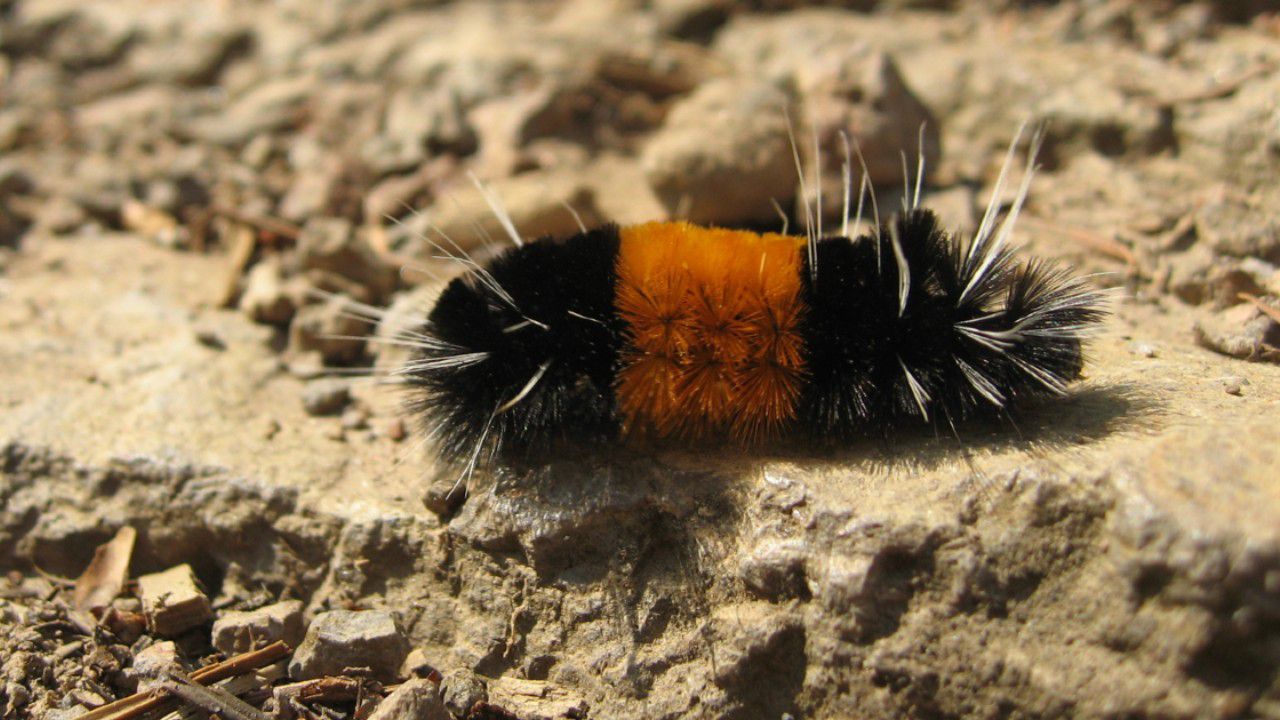Even though animals don’t buy pumpkin spice toothpaste in the fall or plant way too many petunias in the spring, their behavior still changes with the seasons.
Some popular ‘facts’ you’ve heard your whole life are true, but some are straight up myths.
Busy bees
Fact: We see more bees in the fall.
It might seem like bees and wasps are everywhere in the fall. While their activity picks up this time of year, another factor is their population. By autumn, their communities can number in the thousands, says Denise Ellsworth, Program Director of Pollinator Education at Ohio State University. She adds that this means there’s a higher chance of “unfortunate occurrences” with them.
(AP Photo)
They’ll come out more on sunny, mild days since that’s when they’re more energized and know that the pollen is probably dry.
Ellsworth says honeybees need to store enough nourishment to get through the winter, and some gather only from specific plants (similar to how monarch butterflies only lay eggs on milkweed). Having plants that bloom in the fall, especially native ones, can help them survive. Try asters, mums, goldenrod or Russian sage.
Since bumblebees and yellow jackets don’t have perennial colonies, all but the queen die when freezing weather hits.
A long winter’s nap
Myth: Bears sleep the entire time during winter.
Even though most bears hibernate, they’re not actually sleeping for entire months on end. In fact, bear cubs are born during hibernation.
Bears’ metabolism and heart rate drop significantly, and their body temperature also lowers somewhat. The Alaska Department of Fish and Game says that bears get up and move around to reposition themselves, perhaps to prevent sores.

(AP Photo/Rich Pedroncelli)
How long they stay in their shelter depends on conditions. For example, if temperatures get warm enough, they’ll come out and forage. Unseasonably mild weather before spring has really arrived can become a problem, though.
Taking flight
Myth: All birds migrate during winter.
Flocks of Canada geese aren’t necessarily a harbinger of winter or sign of spring. Many are “resident geese,” meaning they stay put throughout the winter. Many robins overwinter in large parts of the U.S., too.
Plenty of bird species make long-distance migrations, though. Hummingbirds, Baltimore orioles, warblers and sandhill cranes are some of the more well-known birds that fly for thousands of miles between their summer and winter homes. When you see them coming or going, you can bet changes are happening.
Animal forecasters
Undetermined: Animals can forecast changing seasons.
The most famous seasonal seer is Punxsutawney Phil, the groundhog in Pennsylvania. The legend says a groundhog spotting its shadow means six more weeks of winter, while no shadow heralds the start of spring. Phil’s accuracy isn’t great, but it’s still a fun tradition.

(FreeImages)
Folklore also says that woolly bear (or woolly worm) caterpillars tell us about the upcoming winter: the longer the black bands, the harsher the winter. While they aren’t a reliable predictor, these critters eat leaves.
When their food supply runs short, they look for a protected place to survive the cold, according to the Missouri Department of Conservation. Their scurrying about is a sign that, no matter how big or small the black bands are, winter is fast approaching.
Our team of meteorologists dives deep into the science of weather and breaks down timely weather data and information. To view more weather and climate stories, check out our weather blogs section.

